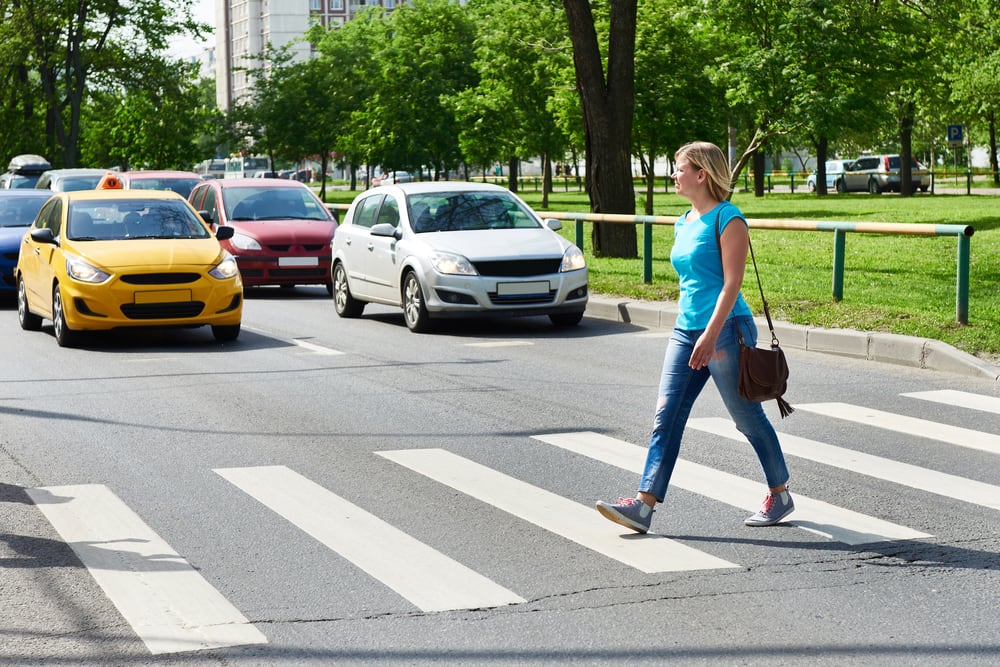

Common sense, courtesy, and right-of-way laws work in combination to ensure your safety in traffic. This is why, when yielding the right of way means avoiding a collision that could cause harm to others, or damage to vehicles, you are required by law to do so. Most traffic-related injuries in California are caused by people who fail to yield right of way.
Summary of California right-of-way laws
The right-of-way laws in California can be summarized as follows:
Pedestrians
A pedestrian is anyone who is on foot, using roller skates or a skateboard, wheelchair, tricycle, or any type of personal conveyance other than a bicycle. In California, you are required to yield right of way to pedestrians.
You may not pass a vehicle that is waiting at a crosswalk.
You may not drive on the sidewalk except to cross it, and when you do cross, you must yield to pedestrians.
You must stop within five feet of a crosswalk to allow pedestrians to cross safely.
You must always yield to blind persons who extend their cane as a signal to you that they wish to enter the crosswalk. If they pull the cane back, this is a signal that they want you to proceed.
Pedestrians have the right of way whether the crosswalk is marked or unmarked.
Pedestrians are required to obey traffic rules the same as motorists, but even if they are in the wrong, you must yield right of way.
Intersections
At any intersection, whether marked or unmarked, you must slow down and be ready to stop.
Right of way is yielded to the vehicle or bicycle that arrives first.
At unmarked intersections, yield to traffic on the through road.
When turning left, yield right of way to any vehicle near enough to present a danger.
On a four-way stop, yield to the vehicle that is there first, and then to the vehicles on the right.
Roundabouts
Any vehicle entering or exiting must yield to traffic already in the roundabout.
Once in the roundabout, do not stop and yield to drivers trying to enter. You may think you are being courteous, but actually you are running the risk of causing an accident.
On mountain roads
California has some very mountainous areas, and this requires extra caution.
- If you meet on a steep grade where neither vehicle is able to pass, the downhill-facing vehicle must back up and yield right of way to the uphill-facing vehicle.
Common Misconceptions About California’s Right-of-Way Laws
In California, many people are confused about what constitutes a pedestrian. It is actually not just someone on foot – it could be a skateboarder, or someone on roller skates. It is not a bicyclist. If in doubt, though, it is best to err on the side of caution and assume that anyone using any type of personal conveyance qualifies as a pedestrian, and must be given the right of way.
Penalties for failure to yield
If you fail to yield right of way in the state of California, you will automatically have a one-point penalty assessed against your driver’s license. As to fines, it will depend on the county and court. In addition to court fees, you could end up paying $400 or more for a single conviction, so you are far better off to obey the right-of-way laws.
For further information, consult the California Driver Handbook, pages 26-29 and 61



